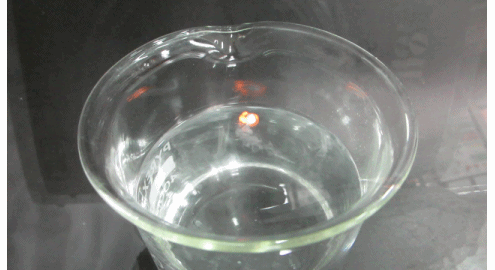Chemical Reaction of Group I Elements with Water
All the metals in group I are much reactive and they vigorously react with water even with the cold one. Their reaction with water gives a solution of metal hydroxide and hydrogen gas. By moving down the group the reactivity of alkali metals with water is increased.
The density of lithium is only half than that of the water, it is gently fizzing and floats on the surface. Gradually, it reacts with the water and disappears and a colorless solution of lithium hydroxide is produced. In this reaction, heat is generated but too slowly that cannot melt the lithium as its boiling point is too high.
Sodium floats on the surface but enough heat is given off for melting the sodium. Almost it is melted at once and makes a small silvery ball that dashes around the surface. Soon it is dissolved in the water and gives the colorless solution of sodium hydroxide.
Potassium behaves like the sodium but its reaction is faster and enough heat is produced.
The density of rubidium is higher than the water so it sinks easily. It reacts immediately and violently and spits out everything out of the container. Resultantly hydrogen gas and a solution of rubidium hydroxide are produced.
On contact with water, cesium explodes. Quite possibly it may shatter the container. It produces hydrogen and cesium hydroxide.

Chemical Reaction of Group II Elements with Water
Just like the alkali metals the alkaline earth metals also react with the water and produce the hydroxides. The majority of alkaline earth metals on reaction with water produces the hydroxides.
At high temperatures, beryllium reacts with the stream and produces hydrogen and white beryllium oxide. It is only metal that does not react with water due to its high ionization energy and small size.
Magnesium also burns in the steam and produces the hydrogen gas and white magnesium oxide. The ribbon of very clean magnesium has a mild reaction with the cold water and after a few minutes’ hydrogen gas bubbles from its surface. Usually, the coil of magnesium ribbon floats on the surface. The resultant magnesium hydroxide is almost insoluble in the water and makes a barrier on the magnesium to prevent further action. Additionally, this reaction is short lived.
Calcium, barium, and strontium react with the cold water with increased vigor and gives hydrogen and metal hydroxide. The reactivity of barium and strontium is similar to that of lithium. Calcium reacts exothermically and fairly vigorously with cold water. This reaction gives off the bubbles of hydrogen gas and together with the alkaline solution a white precipitate of calcium hydroxide is formed.
The solubilities of hydroxides increase by moving down the group and fewer precipitates are formed. The reactions of group II elements are faster and proceed readily. Mainly this is due to a decrease in energy by moving down the group. In other words, the reactions are faster due to the lower activation energies.